Ozito PXCCSS-018U Handleiding
Ozito
Zaagmachine
PXCCSS-018U
Bekijk gratis de handleiding van Ozito PXCCSS-018U (3 pagina’s), behorend tot de categorie Zaagmachine. Deze gids werd als nuttig beoordeeld door 44 mensen en kreeg gemiddeld 5.0 sterren uit 22.5 reviews. Heb je een vraag over Ozito PXCCSS-018U of wil je andere gebruikers van dit product iets vragen? Stel een vraag
Pagina 1/3

SPECIFICATIONS
Input: 18V DC
Idle Speed no: 2400 min¯
Bar Length: 250mm (10”)
Cutting Length Max.: 230mm
Chain Speed: 4.3m/s
Chain Pitch: 9.53mm (3/8”)
Chain Gauge: 1.1mm (.043”)
Oil Tank Capacity: 200ml
Weight: 3.0kg
WHAT’S IN THE BOX
Chainsaw
Battery & Charger
sold separately
CORDLESS
CHAINSAW
ORIGINAL INSTRUCTIONS
ozito-diy.co.uk
Guide Bar Cover
WARNING: BEFORE CLEANING YOUR CHAINSAW OR
CARRYING OUT ANY MAINTENANCE PROCEDURE,
MAKE SURE THE BATTERY REMOVED TO PREVENT
ACCIDENTAL STARTING.
CAUTION: ALWAYS WEAR GLOVES WHEN HANDLING
THE CHAIN AS IT IS VERY SHARP AND CAN CUT YOU
WHEN IT IS NOT MOVING.
Screwdriver
EH-Art. No.: 45.017.59 I-No.: 11016
MAINTENANCE TROUBLESHOOTING
ADDITIONAL SAFETY INSTRUCTIONS
Wear safety goggles
WARNING - To reduce the risk
of injury, user must read
instruction manual
Never expose the device to rain
Always hold the saw with both hands
Wear ear protectors
Maximum cutting length / chain speed
Unlock chain brake before putting into operation!
Store the battery only in dry rooms with anambient temperature
of +10 C to +40 C. Place only charged batteries in storage° °
(charged at least 40%).
Unlock chain brake before putting into operation!
Battery protection system
The tool is equipped with the battery protection system, which helps to ensure a long service
life.
The output power automatically cuts off during operation when the tool and/or battery are
placed under the following situations:
• When the tool is overloaded:
If this occurs, release the trigger switch and remove causes of overload, then pull the
switch trigger again to restart.
• When the remaining battery capacity becomes low:
Recharge the battery pack.
Note: The battery protection system does not in any way damage the tool.
Note: The indicated capacity may be lower than the actual level during use or immediately
after using the tool.
PXCCSS-018U
WARRANTY
1016
Adjusting the Chain Tension
1. Loosen the guide bar locking knob
slightly, by rotating it in an anti clockwise
direction.
2. Adjustment chain tension screw
CLOCKWISE to increase chain tension.
Turning screw COUNTERCLOCKWISE will
decrease amount of tension on the chain.
Adjust the chain tension screw for the
correct tension.
3 - 4mm gap is
the ideal tens nio
For the correct chain tension, pull up on the
chain from the top and middle of the exposed
guide bar. The bottom tip of the links should
only just stay in the track.
3. After the chain has been accurately
tensioned, lock the guide bar in place with
the guide bar locking knob.
Note: Proper tension of the chain is extremely important and must be checked before
starting, as well as during any cutting operation. Taking the time to make
adjustments to the chain will result in improved cutting performance and
prolonged chain life.
Maintaining the guide bar
1. Remove any sawdust from the guide bar, including the groove.
Oil and sawdust combine and emit a burning smell during operation if the blade is not
regularly cleaned.
2. Make sure that the oil port is not clogged. Grease the nose sprocket at the tip of the
guide bar.
3. Check for oil leakage and loose fastenings, especially those securing the handles and
the guide bar.
4. Reverse the guide bar every 8 working hours to ensure uniform wear. Check the guide
rails frequently and if necessary remove burrs and square up the rails using a at le.
Chain Sharpening
Chain File: 3.96mm (5/32”)
Chain Pitch: 9.53mm (3/8”)
Chain Gauge: 1.1mm (0.043”)
Sharpen the chain regularly to maintain
optimum performance of the saw. Signs of a
dull chain are:
• Thesawdustbecomespowder-like
• Extraforceisrequiredtoexecuteacut
• Thecutdoesnottrackinastraightline
• Increasedvibration
Sharpen each cutter using a round 3.96mm (5/32”) chain le. Keep the le level with the
top plate of the tooth. Always use outward strokes and maintain a 30° angle between the
chain and le. After sharpening, the cutters must all have the same width and length.
After every 3–4 uses get an authorised repair centre to professionally sharpen your chain.
They have the special tools necessary to ensure the correct cutting angles and depths.
LEFT HAND
CUTTERS
RIGHT HAND
CUTTERS
30°
30°
Cleaning and storing
• Keepthehandlesfreeofgreasesothatyoucanmaintainarmgrip.
• Cleanthedeviceasrequiredwithadampclothand,ifnecessary,mildwashingup
liquid.
• Ifthechainsawisnottobeusedforanextendedperiodoftime
then you should remove the chain oil from the tank. Briey immerse the chain and
the cutter rail in an oil bath and then wrap them
in oil paper.
• Ensurethattheguidebarcoverisinplacewhenstoring.
CAUTION! ALWAYS DISCONNECT THE BATTERY BEFORE
CLEANING THE CHAINSAW.
CAUTION! NEVER IMMERSE THE UNIT IN WATER OR
OTHER LIQUIDS IN ORDER TO CLEAN IT.
CAUTION! STORE THE CHAINSAW IN A SAFE AND DRY
PLACE OUT OF THE REACH OF CHILDREN.
SPARE PARTS
DESCRIPTION OF SYMBOLS
All of our products undergo strict quality checks to ensure that they reach you in perfect
condition. In the unlikely event that your device develops a fault, please contact our service
department at the address shown on this guarantee card. You can also contact us by
telephone using the customer service number shown. Please note the following terms under
which guarantee claims can be made:
1. These warranty terms regulate additional warranty services, which the manufacturer
mentioned below promises to buyers of its new products in addition to their statutory
guarantee claims are not affected by this guarantee. Our guarantee is free of charge to you.
2. The warranty services only covers defects due to material or manufacturing faults on
a product which you have bought from the manufacturer mentioned below are limited to
either the rectication of said defects on the product or the replacement of the product,
whichever we prefer.
Please note that our devices are not designed for use in commercial, trade or professional
applications. A guarantee contract will not be created if the device has been used by
commercial, trade or industrial business or has been exposed to similar stresses during the
guarantee period.
3. The following are not covered by our guarantee:
- Damage to the device caused by a failure to follow the assembly instructions or due to
incorrect installation, a failure to follow the operating instructions (for example connecting
it to an incorrect mains voltage or current type) or a failure to follow the maintenance and
safety instructions or by exposing the device to abnormal environmental conditions or by
lack of care and maintenance.
- Damage to the device caused by abuse or incorrect use (for example overloading the
device or the use or unapproved tools or accessories), ingress of foreign bodies into the
device (such as sand, stones or dust, transport damage), the use of force or damage caused
by external forces (for example by dropping it).
- Damage to the device or parts of the device caused by normal or natural wear or tear or by
normal use of the device.
4. Your Product is guaranteed for a period of 60 months from the original date of purchase
and is intended for DIY (Do It Yourself) use only. Lithium Ion batteries and chargers are
covered by a 12 month warranty. Warranty excludes consumable parts. Guarantee claims
should be submitted before the end of the guarantee period within two weeks of the defect
being noticed. No guarantee claims will be accepted after the end of the guarantee period.
The original guarantee period remains applicable to the device even if repairs are carried
out or parts are replaced. In such cases, the work performed or parts tted will not result
in an extension of the guarantee period, and no new guarantee will become active for the
work performed or parts tted. This also applies if an on-site service is used.
IN ORDER TO MAKE A CLAIM UNDER THIS WARRANTY YOU MUST RETURN THE PRODUCT TO
THE PLACE OF PURCHASE WITH YOUR REGISTER RECEIPT.
Please refer to the restrictions of this warranty concerning wearing parts, consumables and
missing parts as set out in the service information in these operating instructions.
CUSTOMER SERVICE HELPLINE
GB: 0151 294 4488
IRL: 1850 882711
Ozito-diy.co.uk
OZITO UK Unit 9 Stadium Court, Wirral International Business Park, Plantation Road, Bromborough, Wirral, CH62 3QG
Spare parts can be ordered from the Special Orders Desk at your local
Bunnings Warehouse or Homebase store.
For further information, or any parts visit
www.ozito-diy.co.uk or contact Ozito Customer Service:
Great Britain: 0151 294 4488
Ireland: 1850 882711
E-mail: enquires@ozito-diy.co.uk
The chainsaw is intended for felling trees and for cutting trunks, branches, wooden
beams, boards etc. and can be used for cross cuts and longitudinal cuts. It is not suitable
for cutting any materials other than wood.
The equipment is to be used only for its prescribed purpose. Any other use is deemed
to be a case of misuse. The user / operator and not the manufacturer will be liable
for any damage or injuries of any kind caused as a result of this. Please note that our
equipment has not been designed for use in commercial, trade or industrial applications.
Our warranty will be voided if the machine is used in commercial, trade or industrial
businesses or for equivalent purposes.
PROPER USE
Mayr/Product-ManagementWeichselgartner/General-Manager
explains the following conformity according to EU directives and norms for
the following product
Cordless Chain Saw PXCCSS-018U / Fast Charger PXCG-030U (Ozito)
2014/29/EU
2005/32/EC_2009/125/EC
2014/35/EU
2006/28/EC
X 2014/30/EU
2014/32/EU
2014/53/EC
2014/68/EU
90/396/EC_2009/142/EC
89/686/EC_96/58/EC
X 2011/65/EU
X 2006/42/EC
X Annex IV
Notied Body: TÜV SÜD Product Service GmbH - Riedlerstr. 65 - D-80339 München
Germany
Notied Body No.: 0123
Reg. No.: M6A 16 10 24192 01748
X 2000/14/EC_2005/88/EC
X Annex V
Annex VI
Noise: measured LWA
= 95,4 dB (A); guaranteed L
WA = 98 dB (A)
P = KW; L/Ø = cm
Notied Body: TÜV SÜD (0123)
2012/46/EU
Emission No.:
Standard references: EN 60745-1; EN 60745-2-13; EN 55014-1; EN 55014-2;
EN 61000-3-2; EN 61000-3-3; EN 60335-1; EN 60335-2-29; EN 62233; EN 62321
Landau/Isar, den 28.09.2016
First CE: 16 Archive-File/Record: NAPR015299
Art.-No.: 45.017.59 I.-No.: 11016 R. GehardDocuments registrar:
Subject to change without notice Wiesenweg 22, D-94405 Landau/Isar
ISC GmbH · Eschenstraße 6 · D-94405 Landau/Isar
DECLARATION OF CONFORMITY
ADDITIONAL INFORMATION
Danger!
Sound and vibration
Sound and vibration values were measured in accordance with EN 60745-1 and
EN 60745-2-13.
LpA sound pressure level ..................... 85,7 dB(A)
KpA uncertainty .............................................3 dB
LWA sound power level ....................... 95,4 dB(A)
KWA uncertainty ........................................2,47 dB
LWA sound power level guaranteed ......... 98 dB(A)
Wear ear-muffs.
The impact of noise can cause damage to hearing.
Total vibration values (vector sum of three directions) were determined in accordance
with EN 60745-1 and EN 60745-2-13.
Handle under load
Vibration emission value front handle
ah = 4,88 m/s2
Vibration emission value rear handle
ah = 4 m/s2
K uncertainty = 1.5 m/s2
The specied vibration value was established in accordance with a standardized testing
method. It may change according to how the electric equipment is used and may exceed
the speci ed value in exceptional circumstances.
The specied vibration value can be used to compare the equipment with other electric
power tools.
The specied vibration value can be used for initial assessment of a harmful effect.
Keep the noise emissions and vibrations to a minimum.
• Only use appliances which are in perfect working order.
• Service and clean the appliance regularly.
• Adapt your working style to suit the appliance.
• Do not overload the appliance.
• Have the appliance serviced whenever necessary.
• Switch the appliance off when it is not in use.
• Wear protective gloves.
For EU countries only
Never place any electric power tools in your household refuse.
To comply with European Directive 2012/19/EC concerning old electric and electronic
equipment and its implementation in national laws, old electric power tools have to be
separated from other waste and disposed of in an environment-friendly fashion, e.g. by
taking to a recycling depot.
Recycling alternative to the return request:
As an alternative to returning the equipment to the manufacturer, the owner of the
electrical equipment must make sure that the equipment is properly disposed of if p1-he no
longer wants to keep the equipment. The old equipment can be returned to a suitable
collection point that will dispose of the equipment in accordance with the national
recycling and waste disposal regulations. This does not apply to any accessories or aids
without electrical components supplied with the old equipment.
The reprinting or reproduction by any other means, in whole or in part, of documentation
and papers accompanying products is permitted only with the express consent of the iSC
GmbH.
Subject to technical changes
This consignment contains lithium-ion batteries.
In accordance with special provision 188 this consignment is not subject to the ADR
regulations. Handle with care. Danger of ignition in case of damage to the consignment
package. If the consignment package is damaged: Check and if necessary repackage.
For further information contact: 0049 1807 10 20 20 66 ( xed network 14 ct/min, mobile
phone max. 42 ct/min) Outside Germany charges will apply instead for a regular call to a
landline number in Germany.
LED lights do not illuminate on charger
Check the charging adaptor is securely plugged into the wall outlet.
Check the battery is rmly connected to the charging cradle.
Check that the charging jack is securely connected to the charging cradle.
Sparking visible through the housing air vents
A small amount of sparking may be visible through the housing vents. This is normal and
does not indicate a problem.
GENERAL SAFETY INSTRUCTIONS FOR ELECTRIC TOOLS
DANGER!
Read all safety regulations and instructions.
Any errors made in following the safety regulations and instructions may result in an electric shock, re and/or serious injury.
Keep all safety regulations and instructions in a safe place for future use.
The term “electric tool” used in the safety instructions refers to electric tools operated from the mains power supply (with a power cable) and to battery operated electric tools
(without a power cable).
1. Workplace safety
a) Keep your work area clean and well illuminated. Untidy or unlit work areas can
result in accidents.
b) Do not operate the electric tool in an environment where there is a risk of
explosions and where there are in ammable liquids, gases or dust. Electric tools
produce sparks which could set the dust or vapours alight.
c) Keep the electric tool out of the reach of children and other persons. If there is a
distraction, you may lose control of the appliance.
2. Electrical safety
a) The connector plug from this electric tool must t into the socket. The plug should
never be altered in any way. Never use adapter plugs together with earthed electric
tools. Unaltered plugs and correct sockets reduce the risk of an electric shock.
b) Avoid bodily contact with earthed surfaces such as pipes, heating, ovens and
fridges. The risk of electric shock is increased if your body is earthed.
c) Keep the tool out of the rain and away from moisture. The ingress of water into an
electric tool increases the risk of an electric shock.
d) Do not use the cable to carry the electric tool, to hang it up or to pull it out of the
socket. Keep the cable away from heat, oil, sharp edges and moving parts of the
appliance. Damaged or entangled cables increase the risk of an electric shock.
e) If you are working outdoors with an electric tool, only use extension cables which
are designed speci cally for this purpose. Using specially designed outdoor
extension cables, the risk of electric shock is reduced.
f) If operation of the electric tool in a damp environment can not be avoided, use a
earth-leakage circuit-breaker. The earthleakage circuit-breaker reduces the risk of
an electric shock.
3. Safety of persons
a) Be careful, watch what you are doing and use an electric tool sensibly. Do not use
the tool if you are tired or under the in uence of drugs, alcohol or medication. A
moment of inattention when using the electric tool can result in serious injuries.
b) Wear personal protection equipment and always wear safety goggles. Wearing
personal protection (such as dust masks, non-slip safety shoes, safety helmet or
ear protection, depending upon the type and use of the electric tool) reduces the
risk of injury.
c) Make sure that the appliance cannot start up accidentally. Ensure that the electric
tool is switched off before you connect it to the power supply and/or insert the
battery, or pick up or carry the tool. If your nger is on the switch whilst carrying
the electric tool or if you connect the appliance to the mains when it is switched
on, this can lead to accidents.
d) Remove keys and wrenches before switching on the electric tool. A tool or key
which comes into contact with rotating parts of the appliance can lead to injuries.
e) Avoid abnormal working postures. Make sure you stand squarely and keep
your balance at all times. In this way, you can control the electric tool better in
unexpected circumstances.
f) Wear suitable work clothes. Do not wear loose clothing or jewellery. Keep hair,
clothes and gloves away from moving parts. Loose clothing, jewellery or long hair
can get trapped in moving parts.
g) If vacuuming devices and draining devices can be tted, make sure that these
are correctly attached and correctly used. The use of a dust extraction system
can reduce the danger posed by dust
4. Usage and treatment of electrical tool
a) Do not overload the appliance. Use the correct tool for your work. You will be
able to work better and more safely within the given performance boundaries.
b) Do not use an electric tool with a defective switch. An electric tool that cannot be
switched on or off is dangerous and must be repaired.
c) Pull the plug out of the socket and/or remove the battery before making any
adjustments to the appliance, changing accessories or put the appliance down.
This safety measure prevents starting the electric tool unintentionally.
d) Keep unused electric tools out of the reach of children. Do not allow people who
are not familiar with the appliance or who have not read these instructions to use
the appliance. Electric tools are dangerous if they are used by inexperienced
people.
e) Clean your electric tool carefully. Check whether moving parts are functioning
properly and not jamming, whether parts are broken or damaged enough that the
functioning of this electric tool is aff ected. Have damaged parts repaired before
using the appliance. Many accidents are caused by badly maintained electric
tools.
f) Keep your cutting tools sharp and clean. Carefully maintained cutting tools with
sharp cutting edges will jam less and are easier to control.
g) Make sure to use electric tools, accessories, attachments, etc. in accordance
with these instructions. Take the conditions in your work area and the job in hand
into account. Using electric tools for any purpose other than the one for which
they are intended can lead to dangerous situations.
5. Using and handling the cordless tool
a) Only charge the batteries in chargers that are recommended by the
manufacturer. A charger that is designed for a certain type of battery may pose a
re risk if it is used with other types of battery.
b) Use only the correct batteries in the electric tools. The use of other batteries may
result in injuries and a re risk.
c) Keep unused batteries away from paper clips, coins, keys, nails, screws and
other metallic objects that could cause a short circuit between the contacts. A
short circuit between the battery contacts may cause burns or a re.
d) In case of incorrect use, uid may escape from the battery. Avoid contact with
it. If you touch it by accident, rinse the aff ected area with water. If you get the
uid in your eyes, also seek medical advice. Leaking battery uid can cause skin
irritation or burns.
6. Service
a) Have your electric tool repaired only by trained personnel using only genuine
spare parts. This will ensure that your electric tool remains safe to use.
We pay a great deal of attention to the design of every battery pack to ensure that we supply you with batteries which feature maximum power density, durability and safety.
The battery cells have a wide range of safety devices. Each individual cell is initially formatted and its electrical characteristic curves are recorded. These data are then used
exclusively to be able to assemble the best possible battery packs. Despite all the safety precautions, caution must always be exercised when handling batteries. The following
points must be obeyed at all times to ensure safe use.
Safe use can only be guaranteed if undamaged cells are used. Incorrect handling can cause cell damage.
Important: Analyses con rm that incorrect use and poor care are the main causes of the damage caused by high performance batteries.

CAUTION: THE CHARGER FOR THIS PRODUCT
SHOULD BE PROTECTED BY A RESIDUAL CURRENT
DEVICE (RATED AT 30mA OR LESS).
RUN
BRAKE ON BRAKE OFF
STOP
KNOW YOUR PRODUCT SETUP & PREPARATION
PXCCSS-018U
1. BATTERY & CHARGING (SOLD SEPARATELY) 3. OIL 4. SWITCHING ON/OFF 5. CUTTING
OPERATION
2. INSERTING & REMOVING THE BATTERY
1. Rear Handle
2. Trigger Switch
3. Oil Level Window
4. Chain Oil Tank Cap
5. Side Cover
6. Front Handle
7. Chain Brake
8. Guide Bar Locking Knob
9. Guide Bar
10. Chain
11. Bucking Spikes
12. Motor Cover
13. Lock-Off Button
14. Battery Seating
CORDLESS CHAINSAW
1 2 3 4 5 6 7
Running in the Chain
Prior to operation, a new chain should be run in for 2–3 minutes and then its
tension should be checked and adjusted as detailed in “MAINTENANCE”.
8
BATTERY & CHARGER (sold separately)
This tool is compatible with all battery and chargers from the Ozito
Power X Change Range.
The purchased battery will be shipped in a low charge condition, and requires charging
prior to use. Allow several cycles of charging and discharging (through use of the tool)
for the battery to reach its optimum performance / runtime.
1. Connect the charger into a mains power outlet.
4. The charger LED will illuminate
red signifying that the battery is
charging.
3. With the charger sitting on a at
surface, align the raised ribs on
the battery with the recess in the
charger and slide onto the charger
ensuring a rm connection.
2. The charger LED will ash green
showing power is being supplied
to the charger.
5. The charger LED will illuminate
green once the battery is charged.
Charging your lithium ion battery - Fast Charger
Charger LED Indicator
LED Indicator Situation
GREEN (Flashing) Stand By (no battery pack is inserted)
RED (Flashing) Battery is charging (low charge)
RED (Illuminated) Battery is charging (mid charge)
GREEN (Illuminated) Battery is 85% - 100% Charged and ready for use
BOTH(Illuminated) Battery pack is too hot or too cold (charging will begin
automatically when battery reaches correct charging
temperature).
BOTH (Flashing) Defective battery. Never charge a defective battery
pack!
Remove battery pack from charger.
Battery Charge Indicator
The purchased battery is equipped with a
battery charge indicator to show the state of
the battery charge.
Press the charge indicator button and look to
see which LED lights.
Battery requires
immediate charging
Low state of charge, requires charging soon.
Mid state of charge
Full state of charge.
Note: The battery needs to be removed from the tool to check the state of charge.
1. Connect the charger into a mains power outlet.
4. The charger LED will illuminate red signifying that the battery is charging.
3. With the battery sitting on a at
surface, align the raised ribs on the
battery with the recess in the charger
and slide onto the battery ensuring a
rm connection.
2. The charger LED will ash green
showing power is being supplied
to the charger.
5. When removing the charger from the
battery, rst press the battery release
tab, then slide the charger from its
position.
Charging your lithium ion battery - Eco Charger
Charger LED Indicator
LED Indicator Situation
GREEN (Flashing) Stand By (no battery pack is inserted)
RED (Illuminated) Battery is charging (low charge)
GREEN (Illuminated) Battery is charged and ready for use
RED (Flashing) Battery or Charger fault
RED & GREEN (Flashing) Battery pack is too hot or too cold (remove battery from
charger and store at room temperature 20ºC. Insert
battery again when at correct charging temperature). If
this happens again, the battery is defective and needs
to be replaced.
ONLINE MANUAL
Scan this QR Code with your
mobile device to take you to the
online manual.
Chain Brake
The chain brake operates automatically in the event of kick back.
The chainsaw is tted with a hand guard/chain brake which when operated brings
the chain to a stop within a tenth of a second.
The chain brake can be operated manually by pushing it forward or
automatically as a result of kickback.
Kickback occurs if the chain catches on the wood being cut and the chainsaw
recoils back suddenly.
In the event of kickback, your hand (which is on the front handle during
operation) jerks forward causing the back on your hand to push the guard
forward, engaging the chain brake and quickly stopping the chain.
1
2 1
2
APPLICATIONS
ACCESSORIES
15 Guide Bar Cover 16 Screwdriver
15 16
10
11 12 13 14
9
2. Start cutting by holding the
chainsaw by the front handle
and raising the rear handle.
1. Press the bucking spikes against
the timber ensuring the chain
is not making contact with the
material being cut.
3. If you cannot cut the timber
in a single stroke, apply
light pressure to the front
handle and continue sawing,
draw the chainsaw back a
little then apply the bucking
spikes a little lower and
nish the cut by raising the
rear handle.
4. Withdraw the chainsaw from
the cut while the chain is still
running.
Note: Chain bar oil may leak if the tool is left for long periods. This is
normal. If the tool is to be left unused for an extended time, drain the
oil from the tool. Rell before use. Pruning
Felling a Tree
Decide the direction in which you wish
the tree to fall, taking into account
the direction of the wind, the position
of branches, lean of the tree, ease of
subsequent limbing and bucking and
other factors prevalent at the time.
Pruning is the removal of a limb or branch from
a standing tree.
WARNING!: FELLING A TREE SHOULD ONLY BE
DONE BY TRAINED OPERATORS.
Limbing
WARNING!: FELLING ALWAYS KEEP A BALANCED
STANCE. DO NOT STAND ON THE LOG. BE ALERT TO
THE FACT THAT THE LOG MAY ROLL OVER. WHEN
WORKING ON A SLOPE, ALWAYS STAND ON THE UP HILL
SIDE OF THE LOG.
Limbing is the process of removing the
branches from a fallen tree. Check the
direction in which a branch will bend
before cutting it. Always cut on the
opposite side to the bending direction so
that the guide bar is not pinched in the cut.
For large limbs that cannot be removed in
one cut, make an initial cut from the bent side and nish by sawing from the
opposite direction. Do not remove limbs that are supporting the fallen tree on
the ground until the tree has been cut into lengths.
1
2
Bucking
Bucking is cutting a log into lengths for easier
handling. To saw a log lying on the ground,
rst saw halfway, then roll the log over and cut
from the opposite side. To saw the end of a log
supported off the ground, rst saw up from the
bottom one-third through the log then nish
by sawing down from the top. To saw a log in
the middle of two supports holding it off the
ground, rst saw down from the top one-third through the log then nish by
sawing up from the bottom.
CAUTION: FIRST AVOID CUTTING THE GROUND AS THIS
WILL VERY QUICKLY DULL THE SAW CHAIN.
WARNING!: DO NOT USE AN UNSTABLE FOOTHOLD
OR LADDER. DO NOT OVERREACH. DO NOT SAW
ABOVE SHOULDER HEIGHT. ALWAYS USE BOTH
HANDS TO HOLD THE SAW. FIRST CUT UP FROM THE
BOTTOM AND FINISH DOWN FROM THE TOP.
1
2
Hints and Tips
• Donotforcethesawintothecut.Applyonlylightpressurewhilstrunning
the chain.
• Ifthesawchaingetscaughtinthecut,donottrytoremoveitbytwisting
the guide bar or pulling forcibly. Use a lever or wedge to open up the cut
so that the saw chain is freed.
• Keepyourleftarmwithelbowlockedina“straightarm”positionto
withstand any kickback force.
• Whilecutting,always:
– Run the chainsaw motor at full speed. This makes the job safer, as there
is less chance of pull-in or kick-back.
– Position your body to the left of
the chainsaw so if it kicks back
uncontrollably, it goes over your right
shoulder, never stand in the cutting line
of the saw.
– Keep a rm grip with your left hand
on the front handle, with your thumb
securely below the handle.
STRAIGHT
ARM
POSITION
CHAIN
LINE
Switching ON
1. Pull the hand guard/chain brake towards
you.
2. Hold the front handle with your left
hand and the rear handle with your
right hand.
Switching OFF
1. Release the trigger switch, the chain
and motor will quickly stop.
3. Press the lock-off button with your
thumb, then squeeze the trigger
switch. The chainsaw starts after a
short delay.
4. The chain will now be running,
ready to make a cut. Release the
lock-off switch.
5. To check the lubricating system,
switch on the chainsaw and hold it
with the guide bar and chain above
some light coloured paper such as
newspaper. A steadily increasing
stain caused by oil spray shows
the lubricating system is working.
2. Fill the tank with chain bar oil.
The capacity of the chain oil
tank is 200ml. Do not over ll.
4. Always ll the oil tank when the
oil level is below the minimum
mark on the oil level window.
WARNING!: NEVER START WORK UNLESS THE
CHAIN AND BAR ARE LUBRICATED
1. Remove the chain bar oil cap.
3. Ret cap and clean any oil
spillage.
IMPORTANT: ONLY USE OIL THAT IS EXPRESSLY LABELLED
“CHAIN BAR OIL”.
CAUTION: FIRST TIME USERS SHOULD, AS A MINIMUM
PRACTISE, CUT LOGS ON A SAW-HORSE OR CRADLE
Installing a Battery into the chainsaw
1. Align the ribs of the battery with
the recess below the handle
Removing a Battery from the Chainsaw
2. Slide the battery in so
that it clicks into place.
1. Press and hold the battery
release tab to release the
battery.
2. Slide the battery out.
Product specificaties
| Merk: | Ozito |
| Categorie: | Zaagmachine |
| Model: | PXCCSS-018U |
Heb je hulp nodig?
Als je hulp nodig hebt met Ozito PXCCSS-018U stel dan hieronder een vraag en andere gebruikers zullen je antwoorden
Handleiding Zaagmachine Ozito

24 December 2024

23 Augustus 2024

23 Augustus 2024

23 Augustus 2024

30 Juli 2024

30 Juli 2024

9 Juli 2023

26 Juni 2023

24 Juni 2023

20 Juni 2023
Handleiding Zaagmachine
- Husqvarna
- Grizzly
- FIXIT
- Baumr-AG
- Tryton
- Extralink
- Morrison
- Fein
- Cotech
- BabyGO
- Evolution
- Bavaria By Einhell
- Hitachi
- Hurricane
- Meec Tools
Nieuwste handleidingen voor Zaagmachine
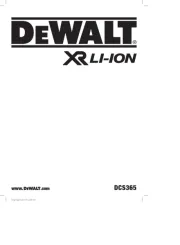
3 Augustus 2025
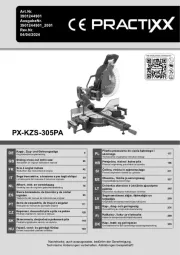
30 Juli 2025
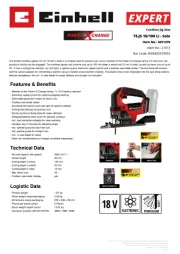
29 Juli 2025
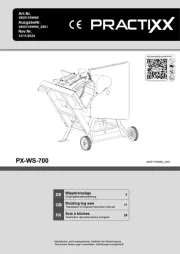
29 Juli 2025
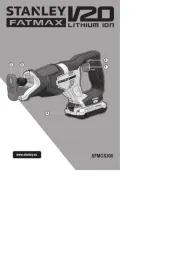
29 Juli 2025
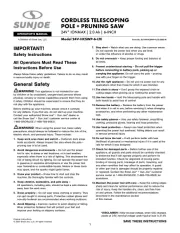
29 Juli 2025
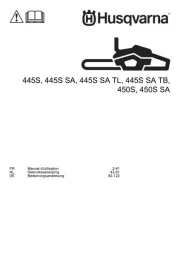
28 Juli 2025
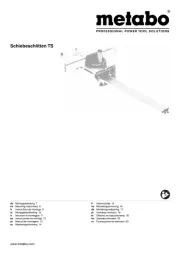
23 Juli 2025
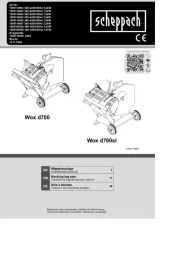
21 Juli 2025
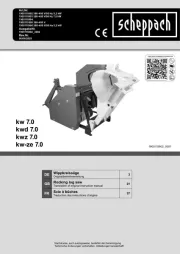
21 Juli 2025